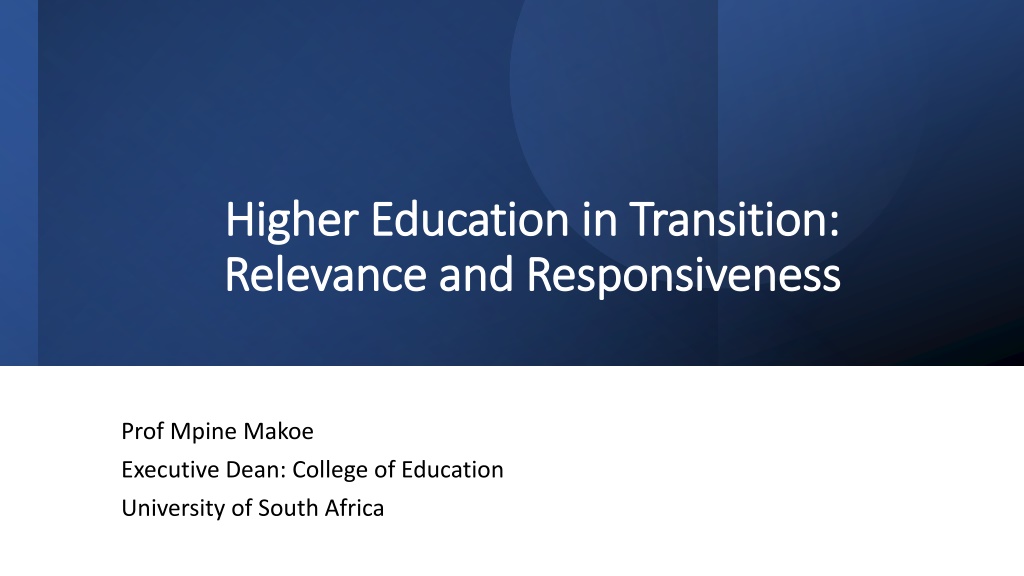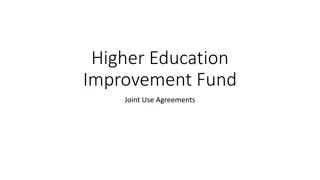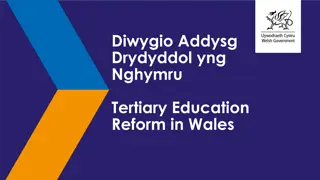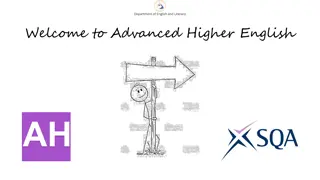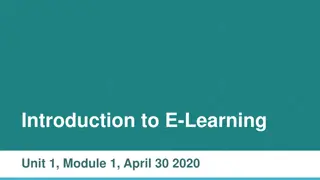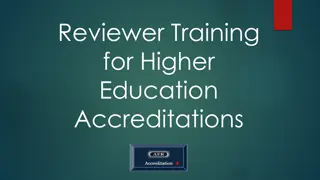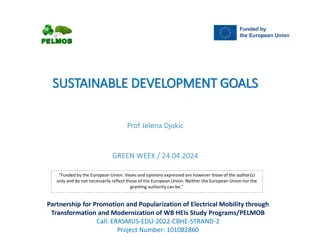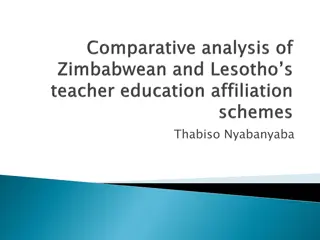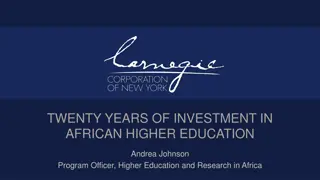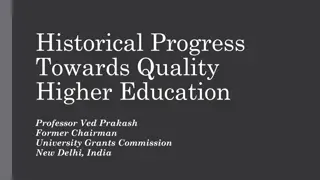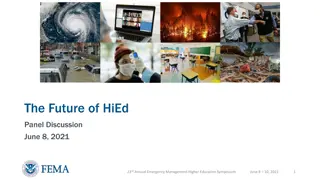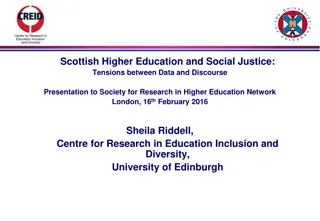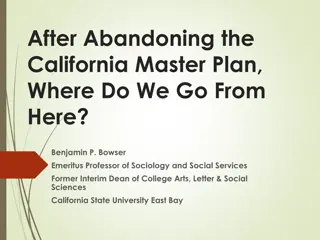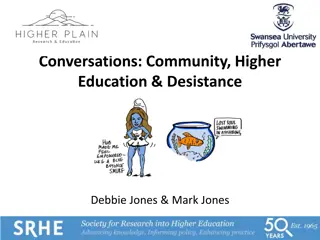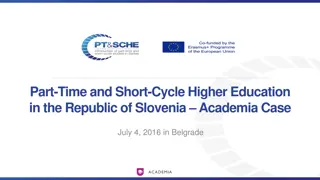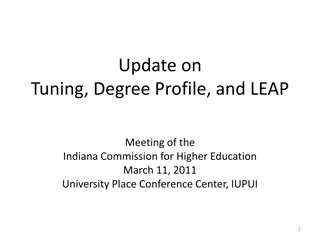Evolution and Challenges in Higher Education
Higher education is undergoing a significant transition marked by changes in learning patterns, skill acquisition methods, and deficiencies in addressing student needs and market demands. Policymakers, academic leaders, lecturers, and students face challenges in designing relevant and quality programs. To meet diverse learning needs, programs must be responsive and aligned with the evolving educational landscape.
Download Presentation

Please find below an Image/Link to download the presentation.
The content on the website is provided AS IS for your information and personal use only. It may not be sold, licensed, or shared on other websites without obtaining consent from the author. Download presentation by click this link. If you encounter any issues during the download, it is possible that the publisher has removed the file from their server.
E N D
Presentation Transcript
Higher Education Higher Education in Transition: Relevance and Responsiveness Relevance and Responsiveness in Transition: Prof Mpine Makoe Executive Dean: College of Education University of South Africa
MAJOR DISRUPTIONS IN EDUCATION 14th century 10th century 21st century Technology enhanced T&L Phoenecian alphabet Printed press
Changes in Higher Education Patterns of learning has evolved and is fundamentally different from the pre-digital era Diversification of information sources, no longer do students rely on a single source of information in their learning journey Lifelong learning and self-directed learning Increased requirements for new currency for higher education where problem-solving, critical thinking, basics skills, languages and digital literacy and skills. New ways of acquiring skills are emerging and rapidly growing in scope and volume enabling students to acquire alternative credentials such as micro-credentials, digital badges an industry-recognized certificates Higher learning is expanding beyond formal education through technology Driven networks of informal and non- formal learning opportunities.
Deficiencies in higher education Lower return on investment for students Reduced government funding Mismatch of skills between graduates abilities and available jobs Unpredictable labour market demand Slow response from higher education institutions
Reflect Rethink Renew
Fitness of purpose Fitness for purpose Value for money
What are the key challenges that Higher Education policymakers, academic leaders, lecturers and students are facing in designing and delivering quality and relevant programmes? What should be done to design and deliver relevant and quality programmes that are responsive to different learning needs of diverse groups of students?
SOCIAL JUSTICE MANDATE
Reimagine higher education of the future Rethink Rethink regulatory frameworks to address technology-enhanced learning Revisit Revisit higher education policies and framework Ensure Ensure access to higher education agile and affordable higher education Diversify Diversify higher education provision Consider a model that promotes credible and relevant provisions of both formal, informal and non-formal education in a way that complement and supplement each other. Consider
Decentralise regions Offer general and specialised academic programmes geared towards the economic development of the region Provide student support services for students in the regions Provide infrastructure and connectivity for students who live in marginalised communities Interact closely with the industries in the region for work integrated learning Reimagine the Regional Model
Ke a leboha Siyabonga Baie Dankie Thank YOU
